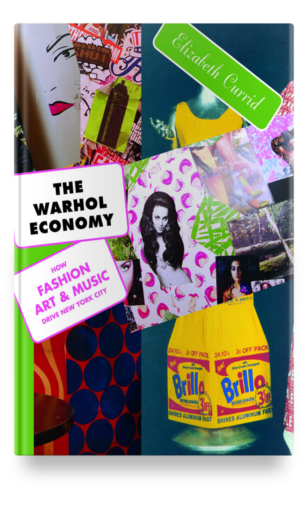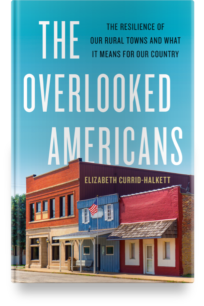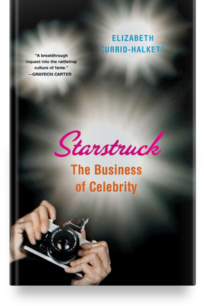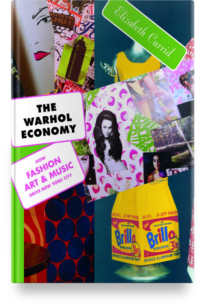The Warhol Economy
“…everyone knows that art and culture help make New York a great place to live. But Currid goes much further, showing that the culture industry creates tremendous economic value in its own right.”
Which is more important to New York City’s economy, the gleaming corporate office—or the grungy rock club that launches the best new bands? If you said “office,” think again. In The Warhol Economy, Elizabeth Currid argues that creative industries like fashion, art, and music drive the economy of New York as much as—if not more than—finance, real estate, and law. And these creative industries are fueled by the social life that whirls around the clubs, galleries, music venues, and fashion shows where creative people meet, network, exchange ideas, pass judgments, and set the trends that shape popular culture.
With vivid first-person reporting about New York’s creative scene, Currid takes the reader into the city spaces where the social and economic lives of creativity merge. The book has fascinating original interviews with many of New York’s important creative figures, including fashion designers Zac Posen and Diane von Furstenberg, artists Ryan McGinness and Futura, and members of the band Clap Your Hands Say Yeah.
The economics of art and culture in New York and other cities has been greatly misunderstood and underrated. The Warhol Economy explains how the cultural economy works-and why it is vital to all great cities.
Praise for The Warhol Economy
“Elizabeth Currid’s hip trip through New York’s production of creative culture is a tour de force.”
“Currid provides an interesting explanation of the transformation of New York City from bohemia to cultural economy as art, music, fashion, and design collided.”
“Elizabeth Currid’s argument in this intelligent and innovative book is that New York, and certain other great cities in particular periods, function as the Factory on a greater scale, and that social policy out to reflect that fact.”
“[Currid] describes the organic, informal, social networking side of the creative arts in a mixed tone of Rolling Stone new journalism and objective reporting that serves to advance her central thesis: that as an independent drive of an urban economy, the arts and its related industries should stop being viewed as the beautiful step-child of city environments.”
“Not every PhD student blows her fellowship money at Barneys New York. But for the urban planner Elizabeth Currid, her passion for style led to some interesting statistics.”
“Any discussion about New York City’s economic well-being tends to start and end with one phrase: Wall Street. As the Street goes, we assume, so goes the city, which is why politicians will do almost anything to keep the brokerages and investment banks happy…. [In] The Warhol Economy the social scientist Elizabeth Currid argues that this fixation is misdirected, and that it has led us to neglect the city’s most vital and distinctive economic sector: the culture industry, which, in Currid’s definition, includes everything from fashion, art, and music to night clubs. In other words, it’s SoHo and Chelsea, not Wall Street, that the politicians should really be thinking about. Of course, everyone knows that art and culture help make New York a great place to live. But Currid goes much further, showing that the culture industry creates tremendous economic value in its own right.”
“In detailing the inner workings of New York’s creative industries…urban planning PhD Currid gives readers an eagle-eyed look at the networking mechanics of the art-as-business crowd. Colorful description abounds, as do colorful characters.”
“A brilliant analysis of the social mechanisms by which creative individuals and the industries they populate drive New York’s economy…Beyond Ms. Currid’s reasoned analysis and careful exposition of fact, The Warhol Economy is simply a pleasure to read in a way that sociological studies never are. Engaging, gossipy without being trashy, and just plain fun, The Warhol Economy is social science with a downtown mentality, it points to significant realities in the generation of cultural capital that are, important, and ready for broadcast.”
“An exploration of how fashion, art, and music drive New York City, The Warhol Economy argues that the city’s cultural resources contribute more to the economy than most policy makers realize or admit. Interviews with well-known bands, designers, artists, club owners, and writers underscore the value of cultural producers; an appendix’s worth of hard numbers back them up.”
“Sweeping, gossipy, flawed and fun, Currid’s book stands alone as a work equally obsessed with the ‘location quotient’ of a given industry and with Marc Jacobs, the designer….It is the job of the social scientist to take a banal observation—for example, that New York is full of artists and musicians who like to go out at night and all seem to know one another—and worry over it to the point that the obvious seems to fairly glow with complexity. Currid pulls this trick off nicely, and she throws in some amusing backstage anecdotes for extra cultural currency.”
“What Currid shows is that culture matters as much as high finance to the city’s economy—150,00 new jobs in 2001, she says—but nobody’s paying attention to how it really works: not the grants for plodding public art, not the checques for art world institutions, but the life. If you want to be world capital of culture, it may be more important to have low rents for big spaces and somewhere to dance….The importance of her work is that she’s saying the obvious to policy wonks and city planners, hanging her arguments on an impressive framework of proper statistics.”
“Elizabeth Currid argues forcefully that government policy plays an essential role in attracting or repelling cultural producers. She suggests that economic planners should apply themselves to building cultural hubs as assiduously as policy-makers did in developing Silicon Valley and the City of London as technological and financial centres.”
“The Warhol Economy is a provocative study of New York City’s economy and how the creative industries such as fashion, art and music drive its economy as much as finance, real estate, and law. What’s fascinating about this book is that she has used first-hand documentation and over 100 illuminating interviews with leading fashion designers, musicians, club owners, and artists such as Ryan McGinness, Lee Quinones, and Futura, to get an insider’s account of how creativity is at work in New York from a sociological point of view.”
“Given the current hype about economic clusters, what a pleasure it is to read a book about a real cluster—one with all the competition and collaboration, the shared pool of skilled labor, and the intense face-to-face interaction that are essential to the true cluster. Others have discussed the New York City arts scene from the standpoint of economic geography, but none better than Currid. Her understanding of how the industry functions and her insightful analysis of its economics provides the basis for her discussion of what urban policy makers should do to foster growth of this essential element in the economy of the creative or knowledge city.”
“This book is about how one urban conurbation, New York City, works and how creativity occurs within it. It sets out to provide an understanding of how creativity in fashion, art and music originates, why it happens and where it takes place. The book is a good read, generously illustrated with stories of the NYC creative milieu past and present, extensively noted and referenced.”
“Currid points to the glittery fashion industry, fabulous club life and art openings as more than just creative inspiration in the New York Scene. All are big financial players that help fill the Big Apple’s own coffers…. The Warhol Economy brings out the voices of New York scenesters, including fashion designers Diane von Furstenberg and Zac Posen, musicians Quincy Jones and the Talking Heads, as well as Hilly Kristal, founder of the famous but now defunct club CBGB.”
“Currid offers social science with a downtown mentality, crunching numbers with one eye on her data set and the other on the dance floor….The Warhol Economy performs the very useful role of demonstrating how that which appears ephemeral and unimportant in the life of a city actually serves as part of what makes it function…. [The] book reforms and advances the debate on cities and the creative economy that continues to loom large in New York and across the country.”
“New York’s creative industries are inextricably linked…[Currid] discusses not just the power of such social networks, but also the fusion of fashion and art.”
“From a public policy perspective, art and culture are often thought of as mere frills—so-called ‘quality of life’ traits—that help attract the business talent that really drives a city’s economy. But in The Warhol Economy, Currid argues that the cultural industries are actually a much larger economic force than is traditionally understood….The research in The Warhol Economy is specific to New York, but Currid argues that its larger lesson can and should be applied to any city that seeks a place in the new idea-driven economy.”
“The numerous formal and informal—and even messy—interactions that connect the people and companies within a cluster come alive under Currid’s direction. Currid offers a detailed, thorough account of how a cluster works at the micro level where people cross over related industries (graffiti artist and fashion designer, for example), cross-pollinate ideas, and work through word of mouth.”
“This book is about how one urban conurbation, New York City, works and how creativity occurs within it. It sets out to provide an understanding of how creativity in fashion, art and music originates, why it happens and where it takes place. The book is a good read, generously illustrated with stories of the NYC creative milieu past and present, extensively noted and referenced.”
“I would recommend The Warhol Economy to the already conversant regional development audience as it is a thought-provoking text and a most welcome contribution to the literature on cultural production and cities.”
“[T]he book is well written in an entertaining style that relies heavily on storytelling and anecdotal evidence. Currid is not afraid to describe what she was wearing during her fieldwork or how she was feeling in certain situations. This style greatly humanizes the book and helps build a subtle and informative contextual background. While this choice of style can be criticized, it adds to the accessibility of the book and makes it one that I am sure many students and faculty alike will enjoy reading.”
“I’ve uttered the words ‘It just kind of happened’ with a shrug hundreds of times when asked about the quick success of my band. Elizabeth Currid blows that lazy response to smithereens by showing the work behind ‘word of mouth.’ I think I’ll have a better answer now.”
“The old economy made deals over golf games and three-martini lunches. Creative New York organizes its networks around art openings, fashion shows, and nightlife. But these networks are a lot more than fun and games. They are deeply important to how new innovations are produced, how cities work to sustain creativity and turn it into commercial value. Cities drive our economies; creativity drives our cities. With her keen eye, sharp analysis, and detailed fieldwork, Elizabeth Currid shows us why and how. In The Warhol Economy, she has unlocked the best-kept secrets in New York.”
“Elizabeth Currid’s The Warhol Economy raises distinctive policy implications: namely, cities will get bigger payoffs by supporting milieu rather than museum. Laws that hurt the clubs are almost as bad as the rising rents that price-out the artists. Tax breaks to corporations make no sense whatever. Currid is more than plausible on all these issues.”
“Elizabeth Currid has written a wonderful book. She shows that the arts and culture are not simply ‘service industries.’ Examining arts and culture in New York for the understanding they provide about deeper changes in our world, Currid addresses fundamental sociological issues while also engaging the general reader—with clarity, insight, humor, and passion. The reader feels taken along to the offices and nightclubs where some of the most creative people in New York gather.”
“Currid takes the reader on a concise tour of New York’s 150-year history of being a haven and incubator for artists while offering a healthy reminder for any city interested in sustaining a lively arts scene: culture drives economic growth.”






